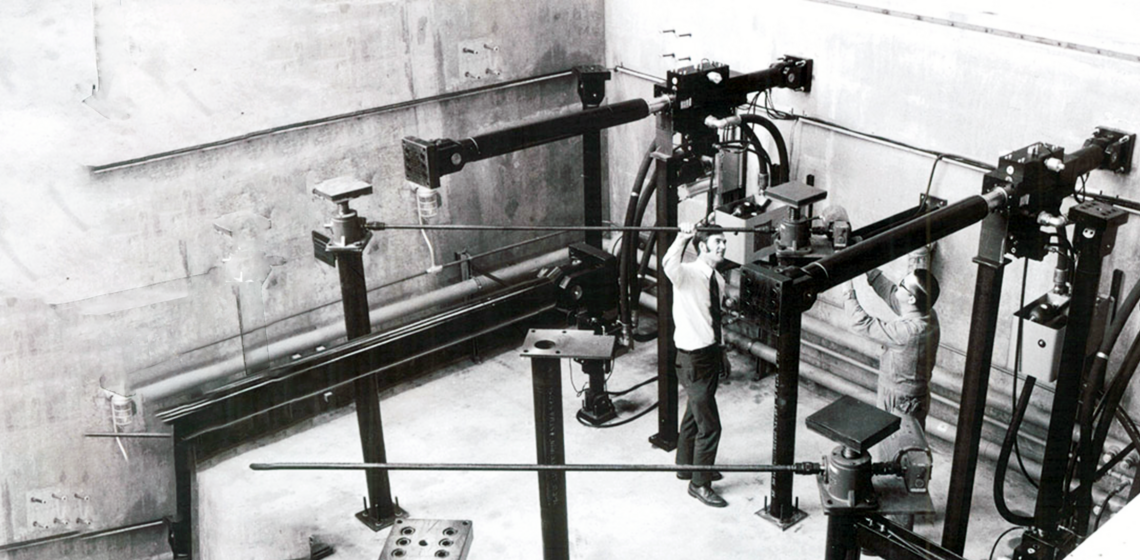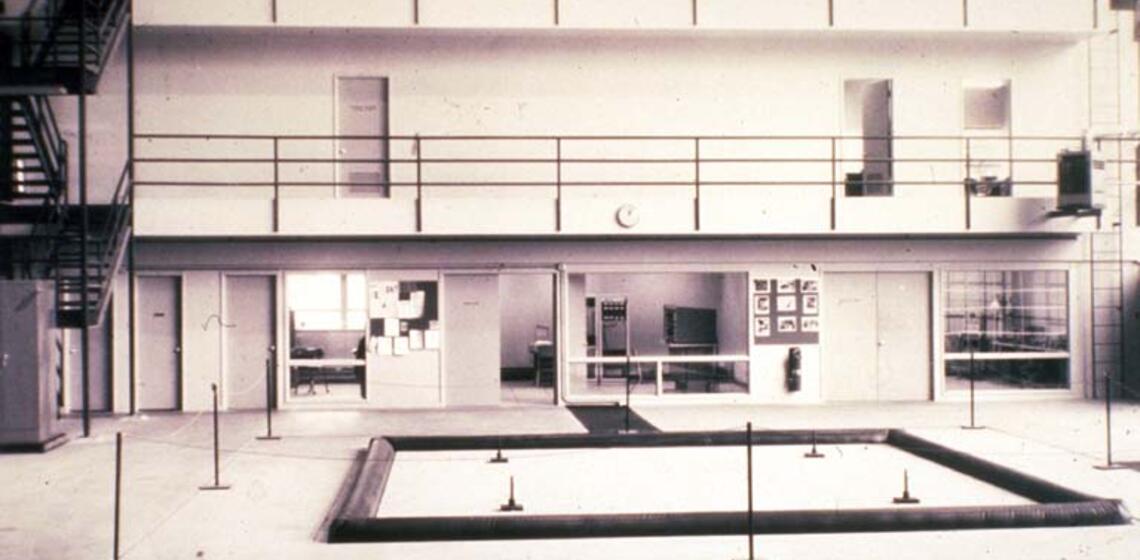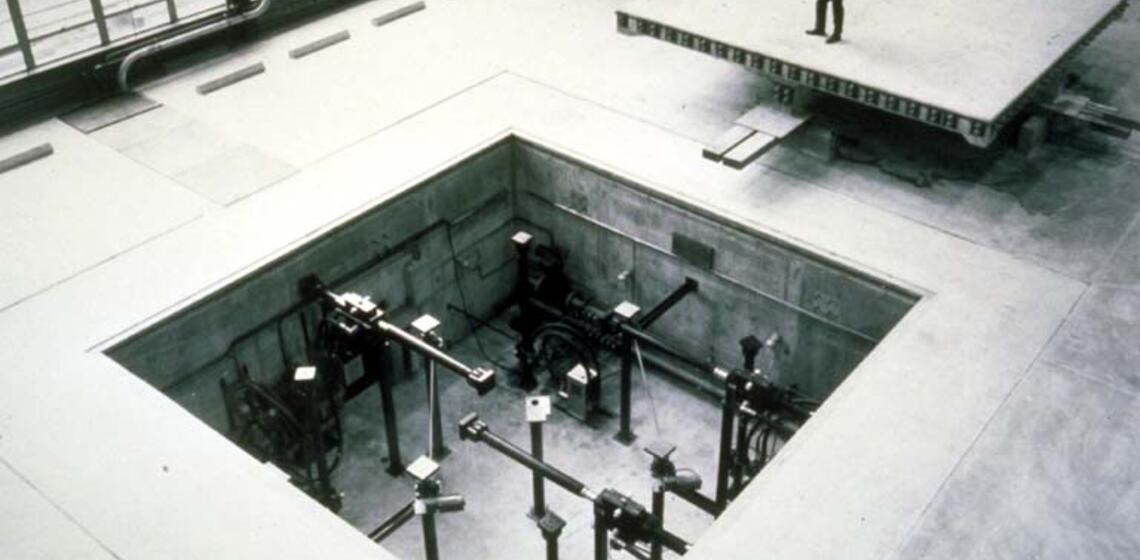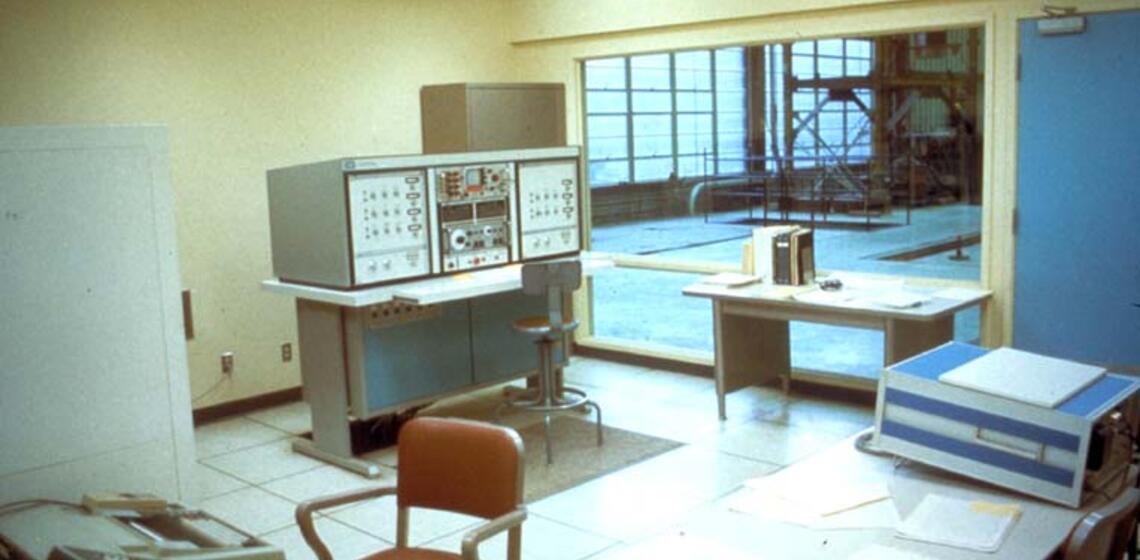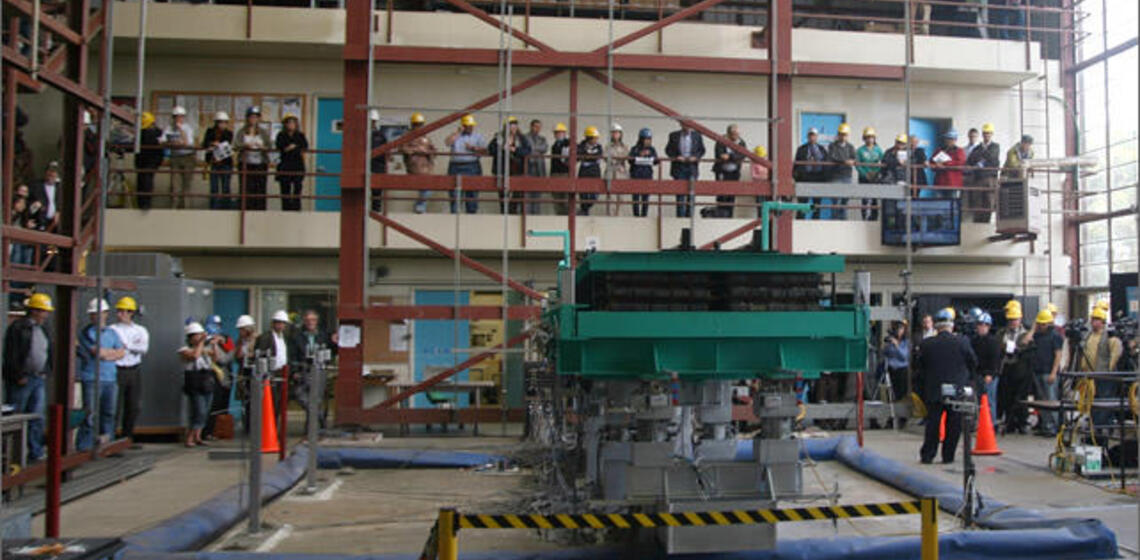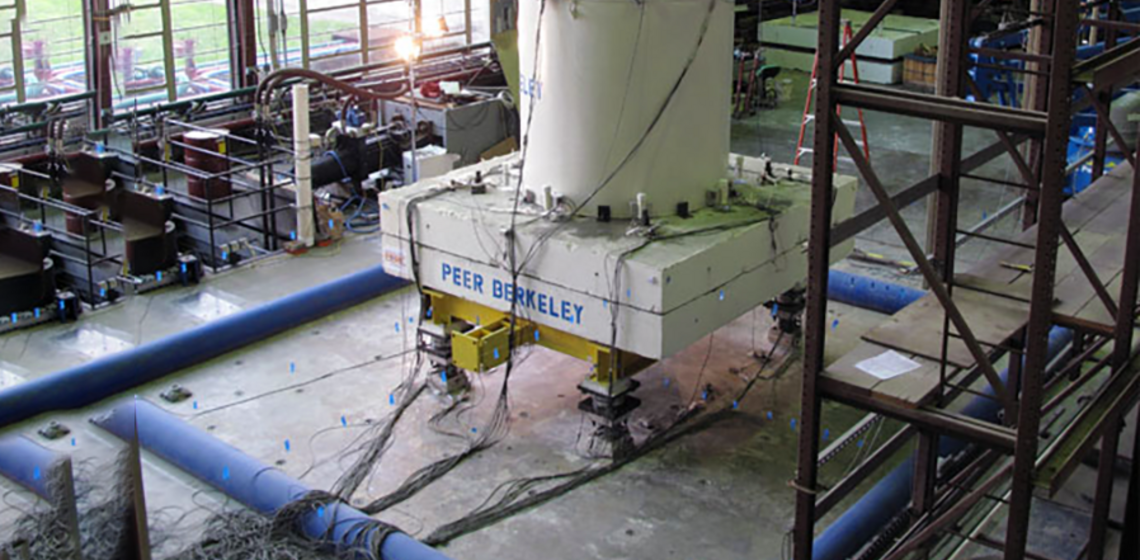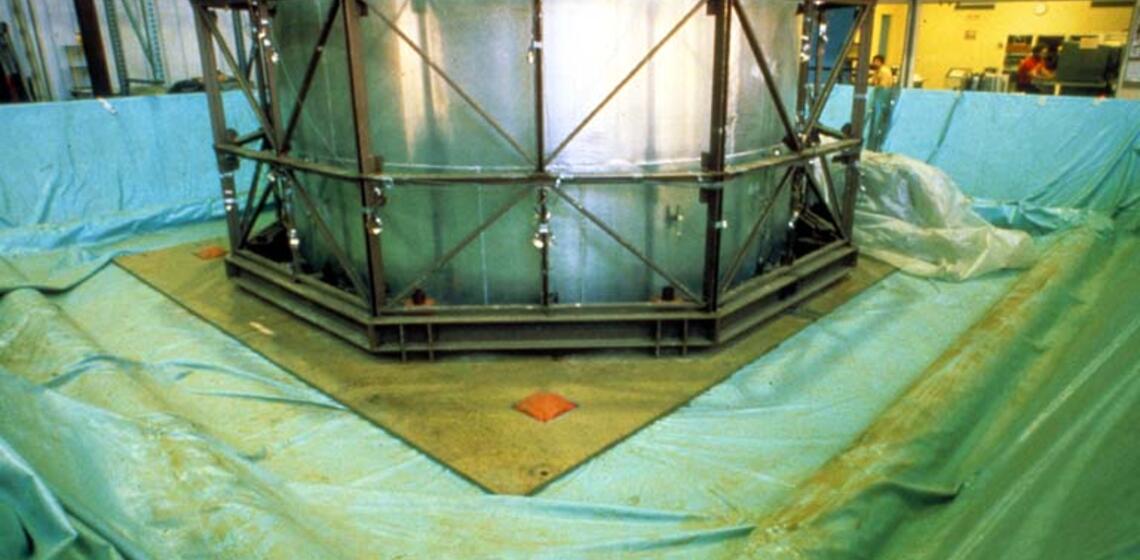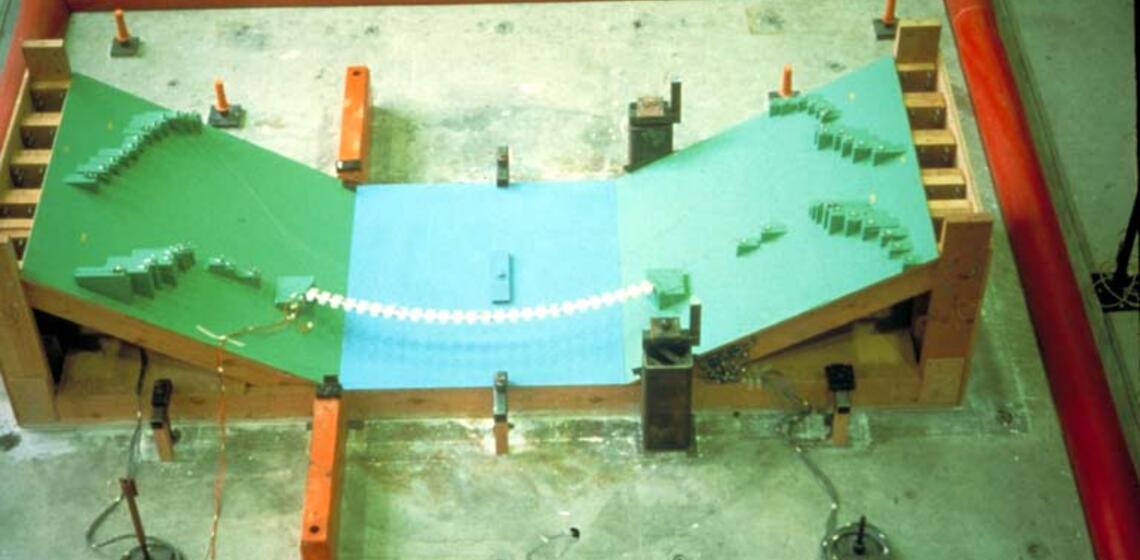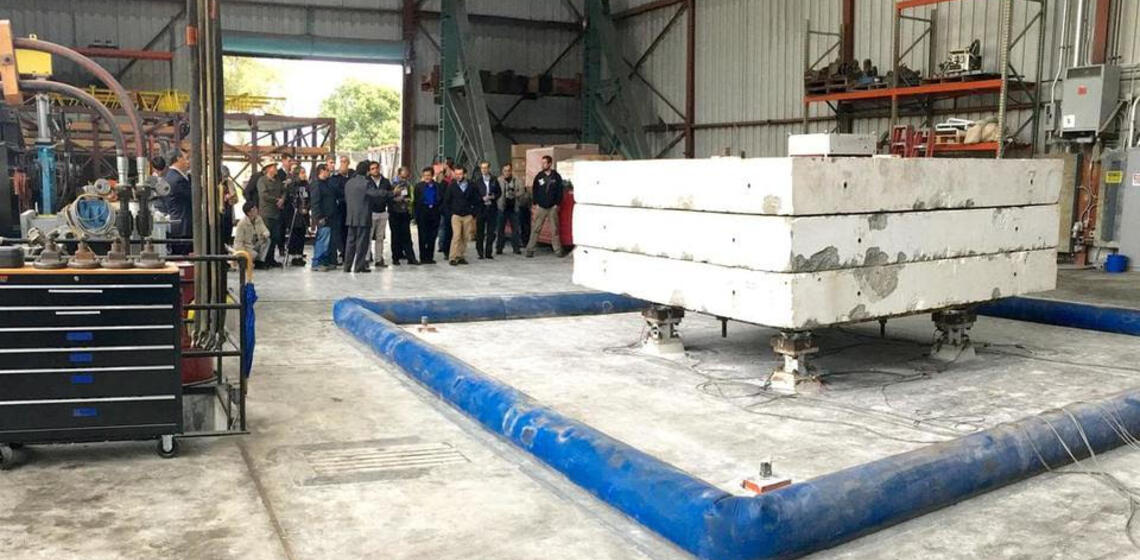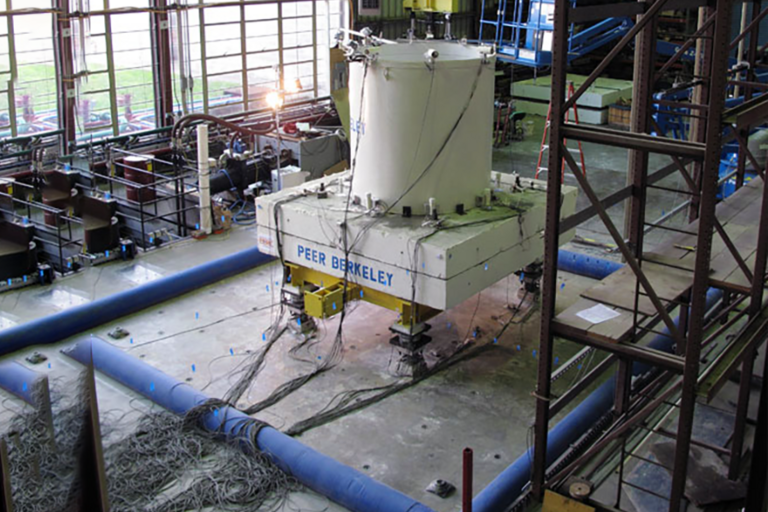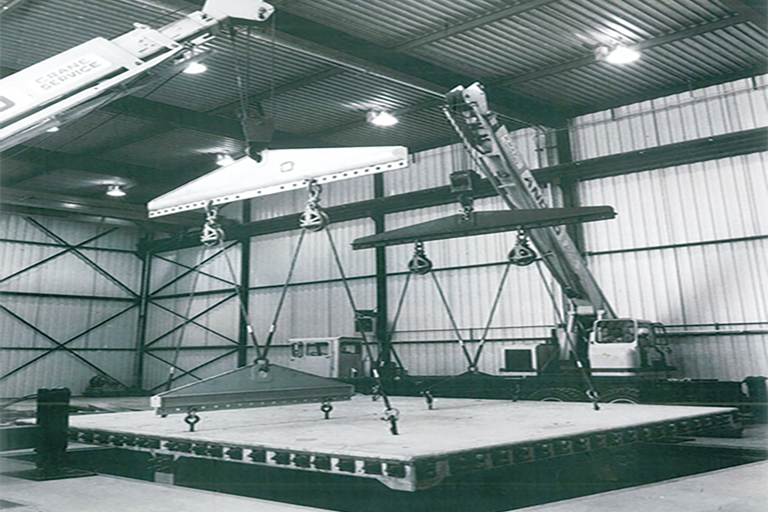In 1968, civil engineering faculty at the University of California, Berkeley (UC) proposed to construct a 100-foot by 100-foot welded steel shaking table, weighing 2.2 million pounds. It was to be hydraulically powered by 60 to 72 actuators, allowing operation in three translational degrees of freedom, with an acceleration capacity of 2/3 g. The proposed shaking table was designed to allow researchers to experimentally test and identify the earthquake behavior of large-scale structures weighing up to 4 million pounds. However, technical uncertainties and economic constraints related to then-available servo-valves, hydraulic actuators and control systems, the desired operational displacement limits of the table, and the ability to limit overturning rotation and flexure of the table, resulted in the design and construction of a prototype shaking table that would serve as a test bed to assess and improve shaking table technology. The as-built, 20-foot by 20-foot reinforced concrete shaking table was officially dedicated in 1972, shortly after the 1971 Sylmar (San Fernando) California earthquake (M6.6). Since its 1972 inauguration, the Shaking Table, located at the Richmond Field Station of UC Berkeley and managed by the Pacific Earthquake Engineering Research (PEER) Center, has been very active and continues to introduce and employ innovative technology, and carry out cutting edge research related to the seismic behavior of structures and equipment. View the June 24, 2022 50th Anniversary program.


